Why you can trust Tom's Hardware
Benchmark Results and Final Analysis
Our standard benchmarks and power tests are performed using the CPU’s stock frequencies (including any default boost/turbo), with all power-saving features enabled. We set optimized defaults in the BIOS and the memory by enabling the XMP profile. The Windows power scheme is set to Balanced (default), so the PC idles appropriately.
Synthetic Benchmarks
Synthetics provide a great way to determine how a board runs, as identical settings should produce similar performance results. Turbo boost wattage and advanced memory timings are places where motherboard makers can still optimize for stability or performance, though, and those settings can impact some testing.


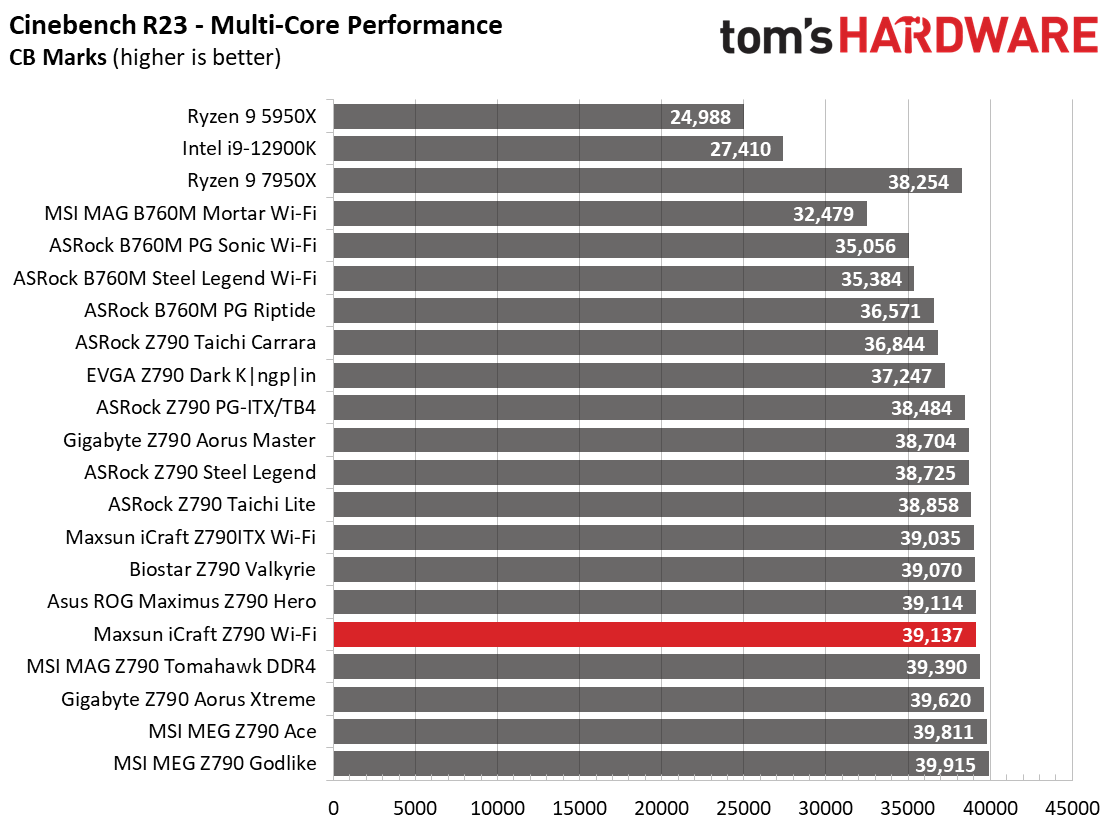







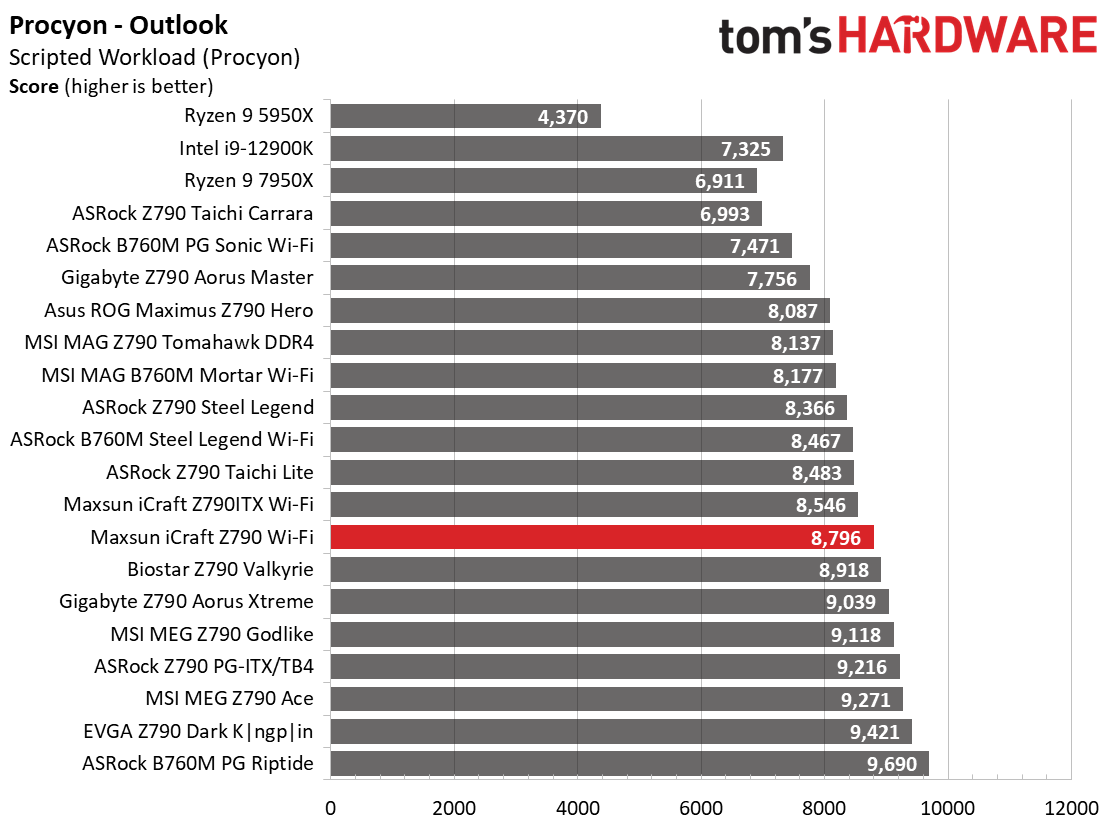
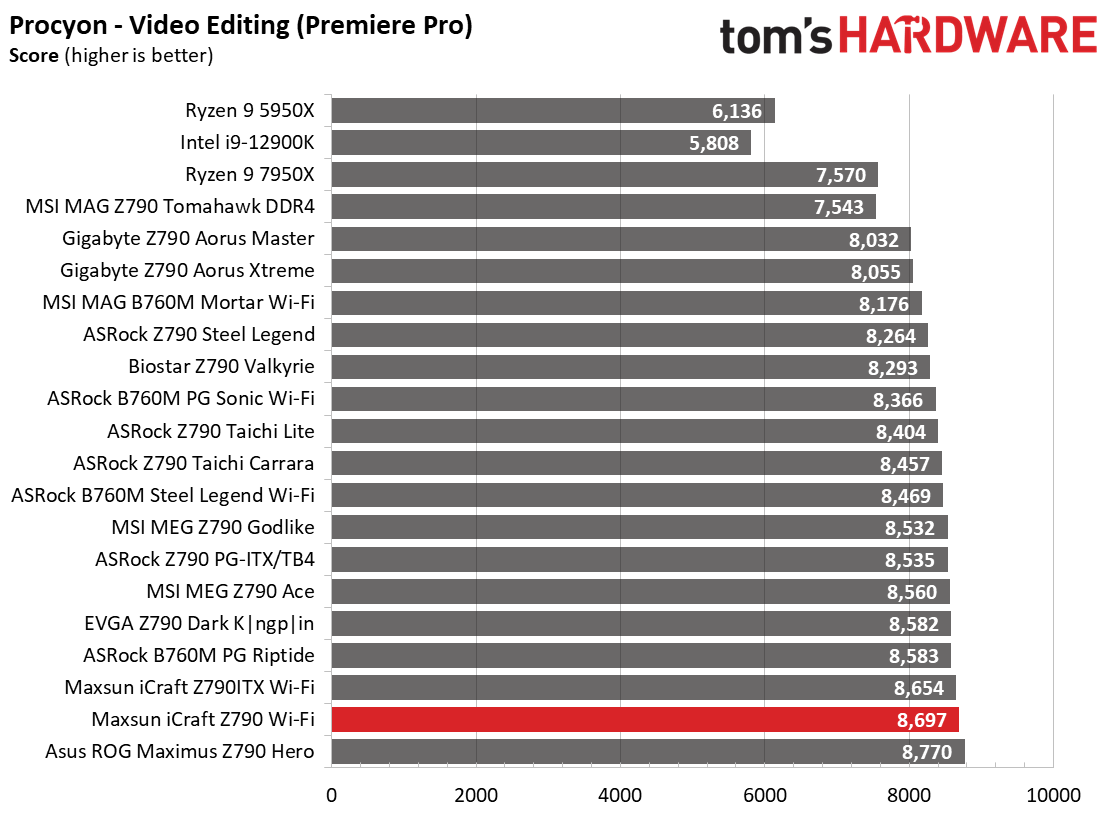




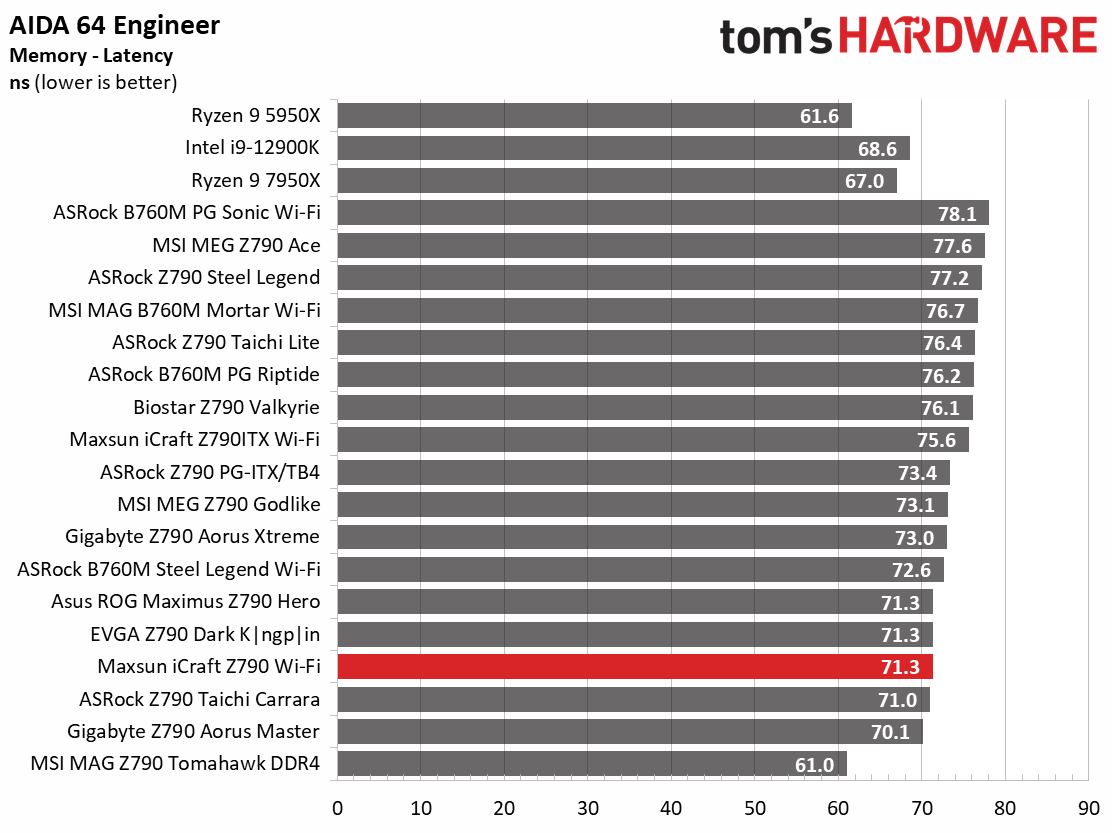
Looking at the results of our synthetic tests, the iCraft Z790 did well, posting average to above average results almost across the board. It did well in the Procyon test suite and looks like a good workhorse due to the BIOS’ more liberal PL1 configuration.
Timed Applications




Our timed tests showed similar results with all right around average or above average as well. Nothing to worry about in these tests either.
3D Games and 3DMark




Starting with the launch of AMD’s Ryzen 7000 platform, we’ve updated F1 21 to F1 22 while keeping Far Cry 6. We run the games at 1920x1080 resolution using the Ultra preset. As the resolution goes up, the CPU tends to have less impact. The goal with these settings is to determine if there are differences in performance at the most commonly used (and CPU/system bound) resolution with settings most people use or strive for (Ultra). We expect the difference between boards in these tests to be minor, with most falling within the margin of error differences. We’ve also added a minimum FPS value, which can affect your gameplay and immersion experience.
As far as gaming goes, again, we saw average to above-average results across the synthetic and actual game testing. It’s competent not only as a work/productivity machine but also in games.
Overclocking
When overclocking, we aim to increase the power and add stress to the VRMs. We do so by increasing the clock speed and voltage until we’re at the thermal threshold for the processor during stress testing. However, where these CPUs are allowed to run with ‘boost’ speeds, those speeds are closer to the limit than ever before.
Get Tom's Hardware's best news and in-depth reviews, straight to your inbox.
With our Core i9-13900K, the approach was a bit different. We had to lower the voltage from what was recorded during stress tests to overclock our chip. We increased the clock speeds of the “P” and “E” cores by 100 and 200 MHz, respectively, over the turbo boost and limited by our cooling. We ended up with 5.6 GHz P core and 4.5 GHz E core clocks using about 1.34V (from DMM). Temperatures peak at or just under the throttling point with this configuration. And as we’ve noted elsewhere, this is the intended performance for Intel’s flagship CPU.

Overclocking with the Z790ITX Wi-Fi wasn’t much different than other boards. The options are a bit basic but still include the right ones to get the most out of your system. That said, we had some trouble dialing in our system in using manual settings again (this happened on the Mini-ITX system). But the auto settings worked. We ran into thermal throttling during the stress test (pictured), but the board could keep the clocks in less stressful situations.
On the memory side, both the GSkill DDR5-5600 and Kingston Fury Beast DDR5-6000 kits worked without issue. We didn’t test the DDR5-7200 kit as the board doesn’t list support for that speed in the first place. For the two other kits, we enabled XMP and tested it without issue.
Power Consumption / VRM Temperatures
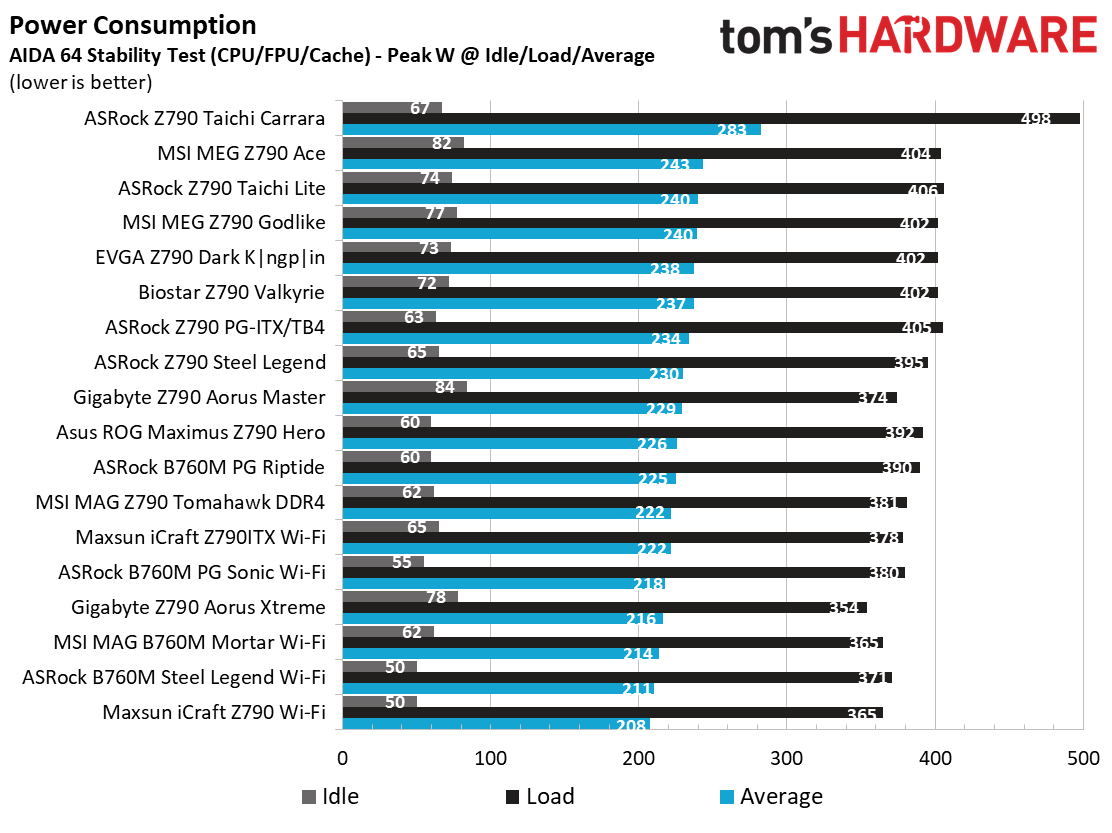
We used AIDA64’s System Stability Test with Stress CPU, FPU, Cache and Memory enabled for power testing, using the peak power consumption value. The wattage reading is from the wall via a Kill-A-Watt meter to capture the entire PC (minus the monitor). The only variable that changes is the motherboard; all other parts remain the same. Please note we moved to use only the stock power use/VRM temperature charts, as this section aims to ensure the power delivery can handle the chip even when overclocked. Since we’re using less power to get more clocks, those datasets are more novel than useful. We’re also temperature-limited on the processor, so adding more power isn’t possible without increased throttling.
Idle power consumption yields a very low 50W, while the load peaked at 365W (around average). Between them, this board averages out to the most power-efficient we’ve tested on this platform. If it’s power savings you want, this board is where it’s at!
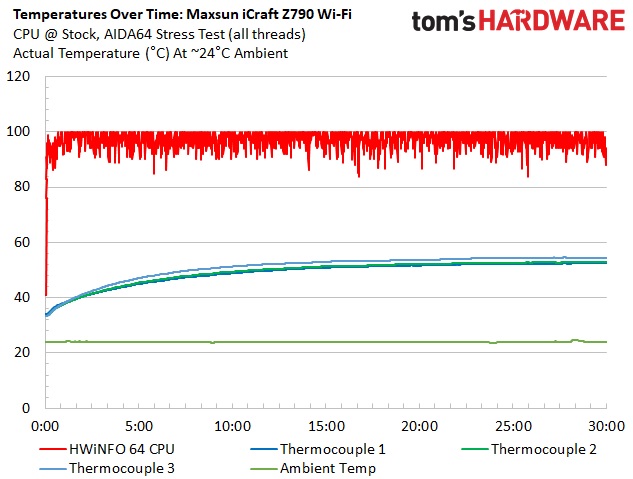

VRM temperatures peaked around 54 degrees Celsius during stress testing, which is well within the specification of the MOSFETs. The power delivery won’t get in the way of overclocking with configuration. CPU temperatures will (as it is on most motherboards).
Bottom Line
Ultimately, we like what Maxsun brings to the table with its Z790 motherboards. The ATX-sized iCraft Z790 Wi-Fi includes what people need and want from a mid-range SKU. Although it’s missing a PCIe 5.0-capable M.2 socket, most of the competition at this price is also lacking there. The audio leaves something to be desired for critical listeners but is still good enough for many as is. You get plenty of M.2 storage, dual 2.5 GbE LAN ports, Wi-Fi 6E, and enough SATA and USB ports (incl. front and rear USB 3.2 Gen 2x2 Type-C ports). In addition to the well-rounded specifications, performance was some of the best we’ve seen overall.
Competition around the $310 price point is plentiful, with some boards offering impressive specifications just above that. Least expensive is the $289.99 Gigabyte Z790 Aorus Elite AX, which offers fast memory support and the Aorus good looks. Asus’ Prime Z790-A Wi-Fi ($309.99) is similarly specced, but with a better audio solution. MSI’s MAG Z790 Tomahawk Wi-Fi ($301.99) is a solid entrant, with one of its selling points being its latest-gen audio codec. Last but not least is the venerable ASRock Z790 Taichi Lite. Priced at $349.99, it comes with high-end features, including Thunderbolt 4 ports, flagship-class audio, and a PCIe 5.0 M.2 socket. It’s more expensive, but clearly the pick of the litter. Still, if you don’t need the high-end features and want to save some money, Maxsun’s board is an acceptable option.
The Maxsun iCraft Z790 Wi-Fi is a relative newcomer for those in the US and North American markets. Although it’s sold on large sites like Amazon and Newegg, the more difficult part is finding it at the MSRP, as sometimes it comes from third-party sellers with an inflated price, or they’re just plain unavailable. If you can get your hands on it close to the MSRP, it's just as good an option as the more well-known brands.
MORE: Best Motherboards
MORE: How To Choose A Motherboard
MORE: All Motherboard Content

Joe Shields is a staff writer at Tom’s Hardware. He reviews motherboards and PC components.
-
mdd1963 Maxsun?Reply
Never heard of them....(and as I've seen other established makers of mainboards with Z790's at sub-$200 on sale, that would seem a tad less risky....) -
Kindle2000 Reply
Z790 from established makers with similar power delivery is at least 350$.mdd1963 said:Maxsun?
Never heard of them....(and as I've seen other established makers of mainboards with Z790's at sub-$200 on sale, that would seem a tad less risky....)
